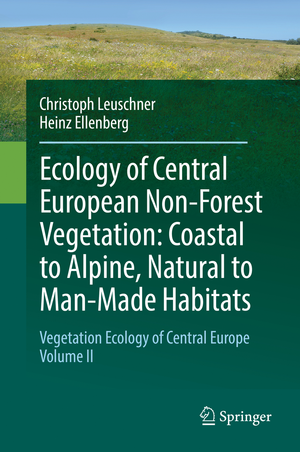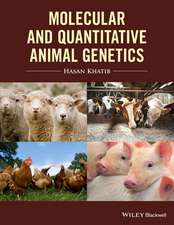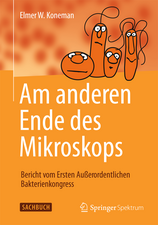Ecology of Central European Non-Forest Vegetation: Coastal to Alpine, Natural to Man-Made Habitats: Vegetation Ecology of Central Europe, Volume II
Autor Christoph Leuschner, Heinz Ellenbergen Limba Engleză Hardback – 9 oct 2017
| Toate formatele și edițiile | Preț | Express |
|---|---|---|
| Paperback (1) | 1857.05 lei 38-44 zile | |
| Springer International Publishing – 13 aug 2018 | 1857.05 lei 38-44 zile | |
| Hardback (1) | 1884.79 lei 38-44 zile | |
| Springer International Publishing – 9 oct 2017 | 1884.79 lei 38-44 zile |
Preț: 1884.79 lei
Preț vechi: 2480.00 lei
-24% Nou
Puncte Express: 2827
Preț estimativ în valută:
360.64€ • 376.58$ • 297.81£
360.64€ • 376.58$ • 297.81£
Carte tipărită la comandă
Livrare economică 11-17 aprilie
Preluare comenzi: 021 569.72.76
Specificații
ISBN-13: 9783319430461
ISBN-10: 3319430467
Pagini: 971
Ilustrații: XXXIV, 1094 p. 380 illus., 61 illus. in color.
Dimensiuni: 155 x 235 x 55 mm
Greutate: 1.98 kg
Ediția:1st ed. 2017
Editura: Springer International Publishing
Colecția Springer
Locul publicării:Cham, Switzerland
ISBN-10: 3319430467
Pagini: 971
Ilustrații: XXXIV, 1094 p. 380 illus., 61 illus. in color.
Dimensiuni: 155 x 235 x 55 mm
Greutate: 1.98 kg
Ediția:1st ed. 2017
Editura: Springer International Publishing
Colecția Springer
Locul publicării:Cham, Switzerland
Cuprins
1. Salt marshes and inland saline habitats.- 2. Sand dunes and their vegetation series.- 3. Mires.- 4. Vegetation of freshwater habitats.- 5. Vegetation of the alpine and nival belts.- 6. Dwarf shrub heaths and Nardus grasslands.- 7. Nutrient-poor dry grasslands.- 8. Agricultural grassland on mesic to wet soils.- 9. Communities on heavy metal-rich soils.- 10. Banks, shorelines and muddy habitats influenced by man.- 11. Ruderal communities on drier soils.- 12. Vegetation of arable fields, gardens and vineyards.- 13. Vegetation of human settlements.- 14. Syntaxonomic overview of the vascular plant communities of Central Europe: Non-forest formations.
Textul de pe ultima copertă
This is a comprehensive handbook in two volumes covering the heart of the continent, including Germany, Poland, the Netherlands, Belgium, Luxembourg, Switzerland, Austria, Czech Republic and Slovakia. Based on a thorough literature review with 5500 cited references and illustrated with nearly 1000 informative figures and tables, all vegetation types of this region are analysed in terms of their climatic and edaphic influences, the structure and dynamics of their communities, the ecophysiological constitution of the main plant species, important aspects of ecosystem functioning, and recent conservation issues. This volume deals with all types of non-forest vegetation in Central Europe, from the mostly natural coastal, mire, freshwater and alpine formations to the broad array of man-made habitats including managed grasslands, heathlands and arable fields, as well as ruderal and urban ecosystems. A key topic is human impact, which has influenced and shaped these ecosystems over the last 7000 years. The 14 chapters are arranged in a sequence from the natural non-forest formations to the purely anthropogenic ones, starting with coastal ecosystems (Chapters 1 and 2: salt marshes and dunes), followed by semi-aquatic ecosystems (Chapters 3 and 4: mires and freshwater systems) and alpine and nival ecosystems (Chapter 5). The subsequent group of anthropogenic systems starts with heathlands (Chapter 6) and managed dry or mesic to wet grasslands (Chapters 7 and 8) and proceeds to the vegetation of heavy metal-rich soils (Chapter 9), ruderal wet or mesic to dry habitats (Chapters 10 and 11), ending up with the heavily disturbed vegetation (Chapters 12 and 13: vegetation of arable land and urban areas). The summarising chapter (14) gives an overview of the most important plant communities of Central Europe.
Caracteristici
A comprehensive overview and up-to-date synthesis of Central Europe’s open land (non-forest) vegetation including about 3000 references
Gives a complete account of all non-forest vegetation types such as dunes and saltmarshes, mires, ponds and rivers, and alpine vegetation, as well as managed grasslands, heaths, arable and ruderal communities, and urban vegetation, analysing their structure, community ecology, biogeochemistry and dynamics
Includes nearly 500 informative figures, tables and photographs
Gives a complete account of all non-forest vegetation types such as dunes and saltmarshes, mires, ponds and rivers, and alpine vegetation, as well as managed grasslands, heaths, arable and ruderal communities, and urban vegetation, analysing their structure, community ecology, biogeochemistry and dynamics
Includes nearly 500 informative figures, tables and photographs

















